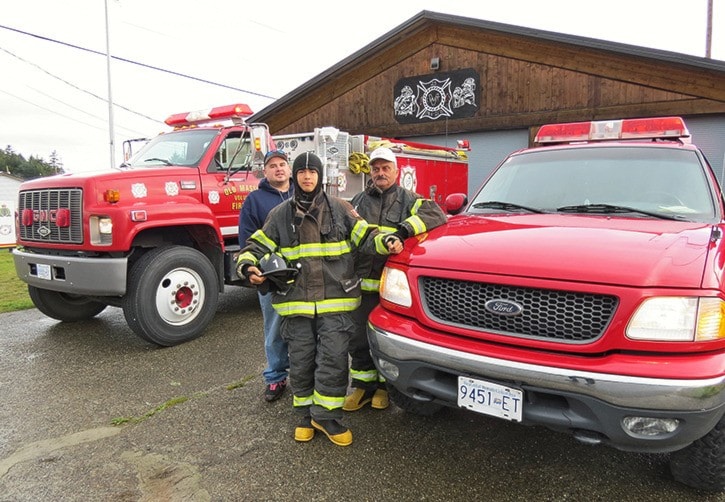It was only a test, but when tsunami sirens rang in villages across Haida Gwaii last Thursday, many islanders recalled the real alarm of four years ago.
On Oct. 27, 2012, a 7.8-magnitude quake struck off the west coast of Moresby Island.
No one was badly injured, and little damage was reported besides the loss of hotsprings on Hotspring Island (now recovering), but people in Skidegate and Queen Charlotte felt the ground shake for two full minutes.
Up north, evacuees parked their cars along Highway 16 from the high ground south of Masset to Port Clements, some still wearing facepaint from a Halloween dance.
Last week’s drill was part of the Great B.C. ShakeOut, which started in 2011 and is modelled after a similar state-wide exercise in California. At 10:20 a.m., sirens went off in most Haida Gwaii villages, and students in all the islands schools practiced their “drop, cover, and hold” for two minutes under desks and door frames.
Chris Horner, coordinator of the Adult Day Program in Old Massett, was a lead organizer for a larger exercise — a practice evacuation south of Masset.
Organized for the last two years by the Haida Health Centre, the Old Massett Volunteer Fire Department, and local RCMP, Horner said he hopes it continues to grow.
“We found a lot of issues when we did the drill last year, and we found we had to do more,” he said.
Among those issues is the fact the designated evacuation site about 13 km south of Masset is unsigned.
“It’s very confusing for people,” said Horner.
“A lot of people think that it’s a gravel quarry.”

While Old Massett and Masset councillors are planning to build a quonset shelter and storage on the site, Horner said in the meantime it would be nice to arrange for at least a portable washroom.
Masset councillors met their provincial counterparts at the Union of BC Municipalities meeting in September, and came away hopeful they can find funding for large storage containers, propane generators, and emergency supplies, while Old Massett works on securing a quonset shelter.
Councillor Bret Johnston spoke with Naomi Yamamoto, B.C.’s Minister of State for Emergency Preparedness, shortly after listening to a debriefing on a large-scale tsunami exercise in Port Alberni.
“I told her how isolated we are,” said Johnston, who underscored how unlike the Port Alberni exercise, Haida Gwaii has no local Navy, Air Force, or search-and-rescue units trained in collapsed building scenarios.
“I stressed that we need foodstuffs and storage containers on the ground so we can live for a couple weeks if we have to,” he said.
Masset council has since asked Yamamoto to visit for a better sense of what’s needed here.
After the 2012 earthquake, no tsunamis hit any of the villages on Haida Gwaii. A tide gauge in Hawaii recorded one just 0.8 metres high.
But months later, researchers with the Geological Survey of Canada found salmon and driftwood scattered deep in the forests of west-coast Moresby Island, and seaweed that hung 2.5 metres up the trees.
They found that three-metre tsunamis likely hit about 200 km of Moresby Island coastline, and the waves ran up to seven meters at the heads of some narrow inlets.
The 2012 earthquake was only the second one near Haida Gwaii known to generate tsunamis, and it struck inside the same aftershock zone as the largest measured earthquake in Canada — the 8.1 quake of 1949.
Seismologists have since found that unlike the 1949 earthquake, which was caused by a horizontal ‘strike-slip’ between the Pacific and continental plates, the one in 2012 was a vertical ‘thrust’ quake, which is far more likely to generate tsunamis.
The largest earthquakes are so-called ‘megathrust’ quakes like the 9.2-magnitude one that struck Prince William Sound, Alaska, in 1964. It caused fatal local tsunamis by triggering submarine landslides, and sent out others that swept away 55 homes in Port Alberni about OVERSET FOLLOWS:three hours later.
